21 Beautiful Raphael Paintings To Know in 2025
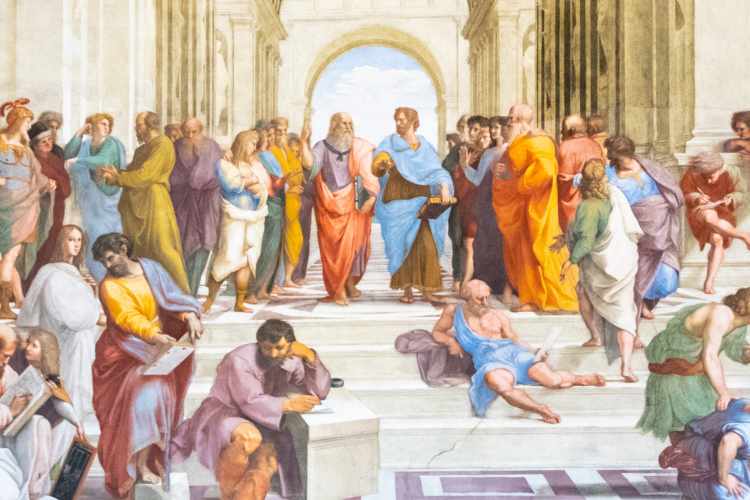
Raphael paintings are among some of the most famous paintings of all time, right up there with Leonardo da Vinci paintings, Caravaggio paintings and Vermeer paintings. Why did Raphael create art? Simple, he created art for cultural, religious and personal ideals. The 16th century was a period of cultural revival, an especially exciting century for a painter like Raphael, one of the most famous painters, whose work became a product of his environment and his own beliefs.
Jump to Section
Who Was Raphael?
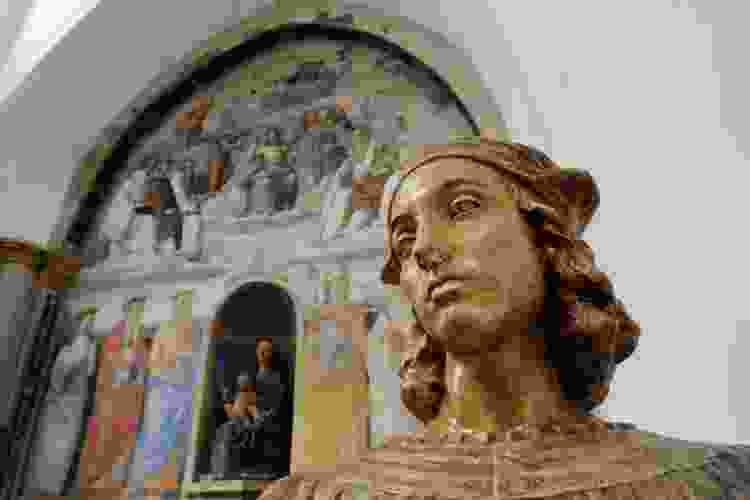
Raffaello Sanzio da Urbino, known today simply as Raphael, was both a painter and an architect in Italy during the High Renaissance. When was Raphael born? In 1483. Now, over 500 years later, this Italian artist’s colorful and fruitful journey has awarded him the distinction of Supreme High Renaissance painter. A more interesting question — due to the painter’s considerably “wild” sex life — might be how did Raphael die? According to an article in ArtNet News, his reputation has long fed the myth that the artist died of syphilis, but a recent study suggests Raphael died from a pulmonary disease at the age of 37.
Regardless of myth or speculation, Raphael paintings have been admired for centuries due to their clarity of form, ease of composition and representation of human grandeur — an important Neoplatonic ideal and one that critics, especially ones in the 15th and 16th century, fawned over. Raphael paintings are celebrated for their balanced and harmonious compositions. The artist was an expert in arrangement and framing, calling attention to not only his talents as a painter, but his talents as a storyteller as well.
What Was Raphael Known For?
What is Raphael's Most Famous Painting Called?
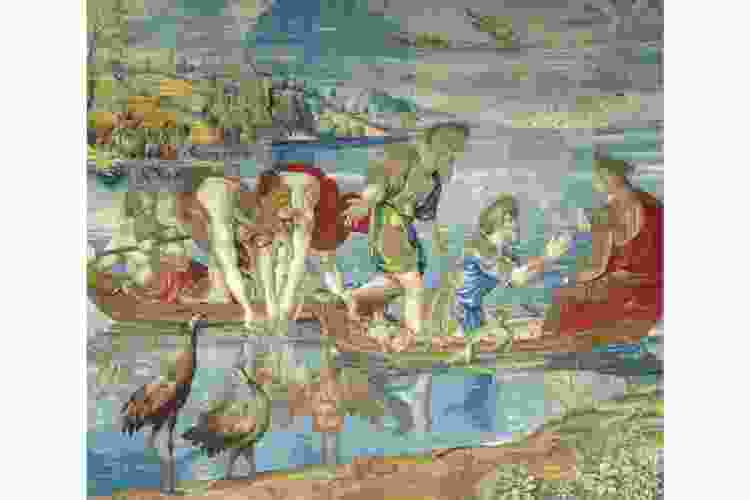
What was Raphael known for? You could also ask, "What is Raphael's most famous painting called?" The answer to both is The School of Athens, but no legacy career is built off the back of one painting. In just over two decades, Raphael created somewhere between 100-130 paintings over a relatively short career. However, Raphael’s ambition did not stop at Renaissance paintings. He explored other artistic endeavors like tapestry and architecture.
Where are Raphael's paintings now?
Where are Raphael’s paintings now? Today, Raphael paintings can be found in any number of museums, and Raphael paintings in America are studied across most all college and university campuses. Many are housed in prestigious museums and galleries such as the Uffizi Gallery in Florence, the Louvre in Paris, the Metropolitan Museum of Art in New York and more. Raphael paintings can also be found in religious institutions like St. Peter’s Basilica in the Vatican City, Santa Maria del Popolo in Rome and the Church of San Francesco al Prato in Perugia.
Most Iconic Raphael Paintings
1. The Three Graces (1504-1505)
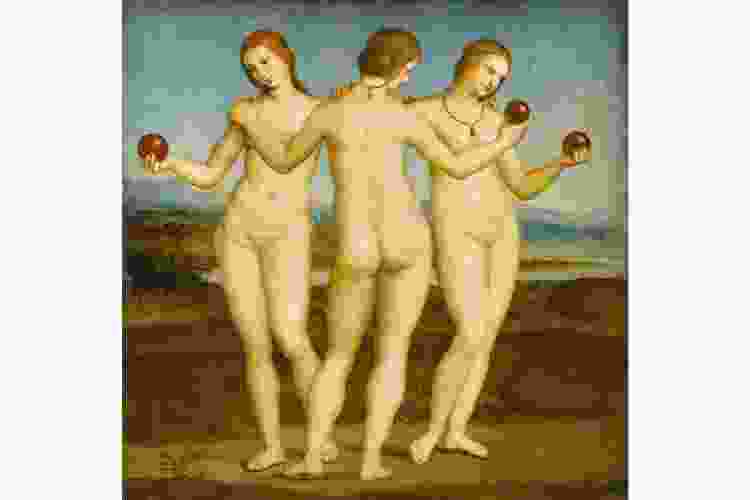
In one of the most sensual of the Raphael paintings, we see the goddess of charm, the goddess of beauty and the goddess of creativity. Their skin illuminates the canvas, each figure holding an apple as if studying a piece of gold. In the background, the sky is blue and the land baron, yet serene. There’s a sense of mythological beauty in his harmonious composition, reflecting Raphael’s mastery of anatomy and representation of accurate human proportion.
2. The School of Athens (1509–1511)
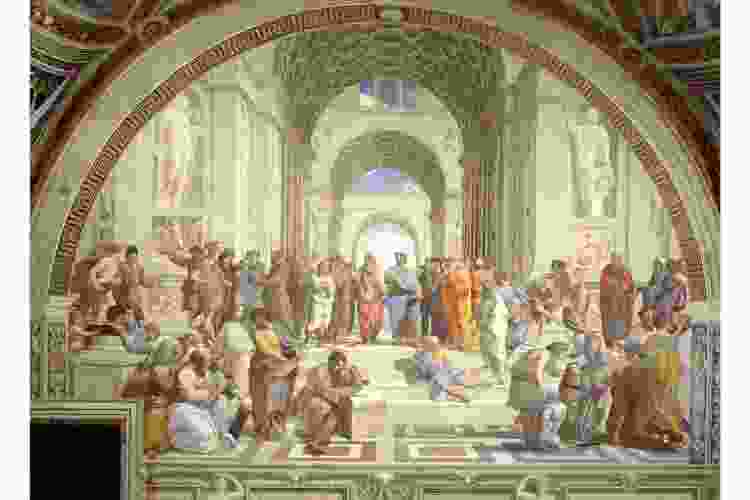
Probably one of the most famous Raphael paintings, here, the artist depicts an important group of philosophers who, too many, were some of the world's greatest thinkers. At the center of this congregation of philosophers, mathematicians, and scientists are Plato, Aristotle, and Pythagoras. Raphael had a few important mentors, many of them famous themselves. Leonardo was one of those mentors and his impact on Raphael is highlighted in the painting’s perspective projection, a popular characteristic of high Renaissance art and one he is said to have learned from Leonardo.
3. Self-portrait (1504-1506)

There are not many well-known portraits of Raphael. However, this self-portrait is one of them. It is a contemplative study of Raphael in his younger years. He portrays himself with a soft gaze, smooth skin, long flowing hair and wearing a simple black hat. One of the more magestic and simple Raphael paintings.
4. The Triumph of Galatea (1511)
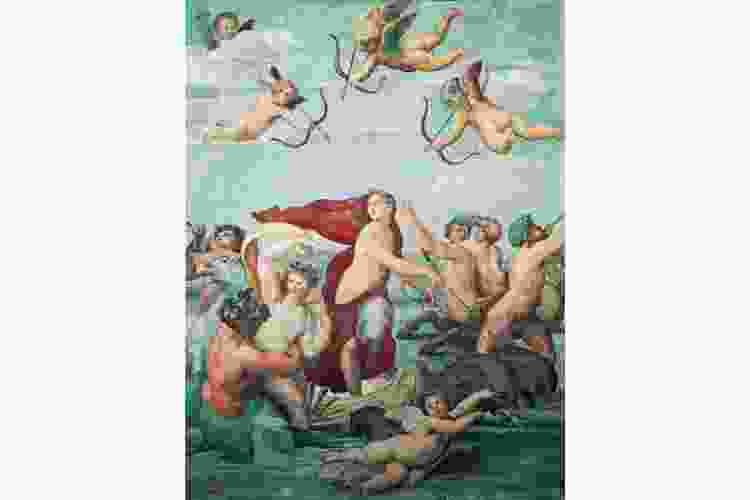
A water nymph surrounded by cherubs? Sounds like a myth, which actually explains why Raphael would paint such a scene. Neoplatonism, a way of thinking that built on Ancient Greek philosophy by adding spiritual and mystical elements, flourished during the High Renaissance. In this, one of the most symbolic Raphael paintings, a sea nymph known as Galatea rides a shell-drawn chariot. She is surrounded by cherubs holding Cupid bows and other mythical creatures. There is something romantic about the painting’s rich and vibrant colors.
5. La Fornarina (1519-1520)

Also referred to as the Portrait of a Young Woman, La Fornarina is believed to be one of the Raphael paintings that shows his lover. But who’s to say? In the painting, a nude woman is seen covering her lower abdomen with a sheer veil. Her gaze is directed upon the viewer, and she sports a soft smile.
6. The Sistine Madonna (1513–1515)
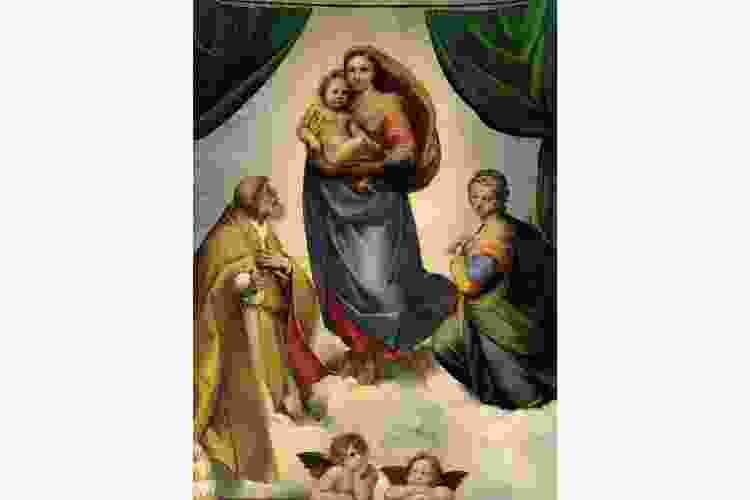
How many Madonna and Child paintings did Raphael paint? About 30! One of them being The Sistine Madonna. In The Sistine Madonna by Raphael, the Virgin Mary herself descends from the heavens like a goddess, carrying the Christ child along with her. She is accompanied by crowned cherubs and saint-like figures who all have tender expressions. The cherubs are now iconic, being used on all sorts of prints, making this one of the most famous Raphael paintings (or at least the bottom half of the painting).
7. The Transfiguration (1519-1520)
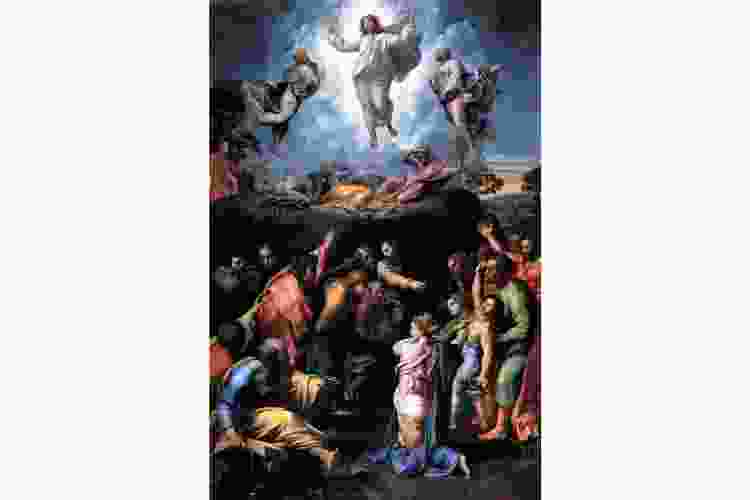
The Transfiguration by Raphael was his final masterpiece. This Raphael painting was completed in 1520, the same year as the artist's death. Transfiguration in simple terms means a great change of form. It was coined by an event in the New Testament where Christ transforms from an ordinary man into a radiant being, shining in glory.
Raphael conveyed this complex spiritual narrative by practically splitting the canvas in half. The upper half of the painting is full of light as Christ ascends from the heavens coated in bright light. The lower half of the canvas is dark and heavy — a scene with an air of chaos and human suffering. This juxtaposition, with its vivid light, form and emotion, has made this one of the most tragic Raphael paintings — almost as sacred as the origin of its story.
8. La Belle Jardinière or Madonna and Child with Saint John the Baptist (1507)
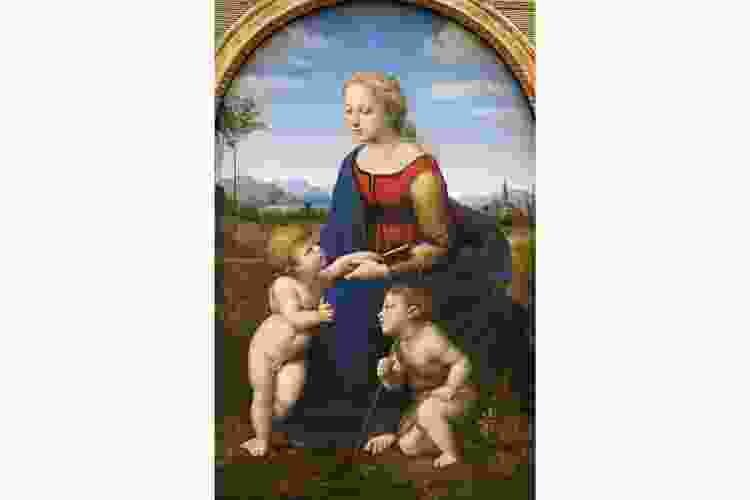
Unlike The Transfiguration, this is one of the more lighthearted Raphael paintings. The Madonna is caring for the young infant Christ as well as a young infant John the Baptist. Although Raphael was not able to finish the painting on his own before having to leave Florence — where it had been commissioned — it is considered one of the most famous Madonna portraits. Of course, Ridolfo del Ghirlandaio deserves a bit of the credit since he did help to complete the masterpiece.
9. Disputation of the Most Holy Sacrament (1509-1510)
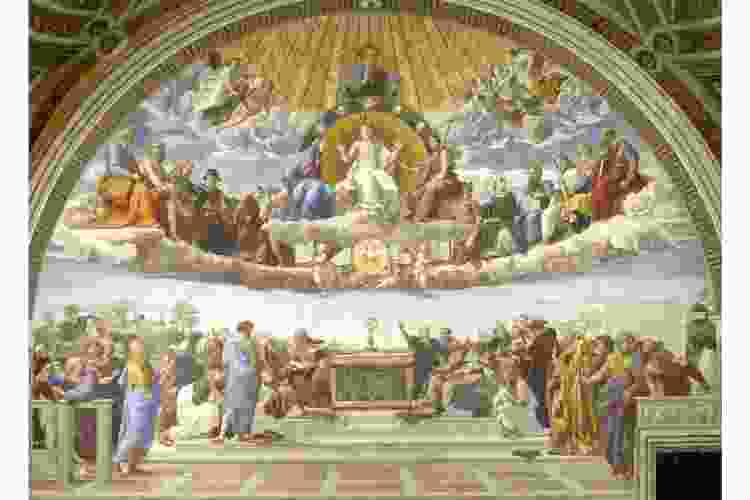
What did Raphael paint at the Vatican? Many of the key Raphael paintings were painted at the Vatican, but one in particular, Disputation of the Most Holy Sacrament, is among the most renowned. This Raphael painting portrays a world where theology and science meet religion. In the upper half of the canvas, Christ, the Virgin Mary and other saint-like figures hover over church scholars and theologians who are participating in what seems to be a divine and intellectual discourse centering around the Eucharist.
10. Marriage of the Virgin (1504)
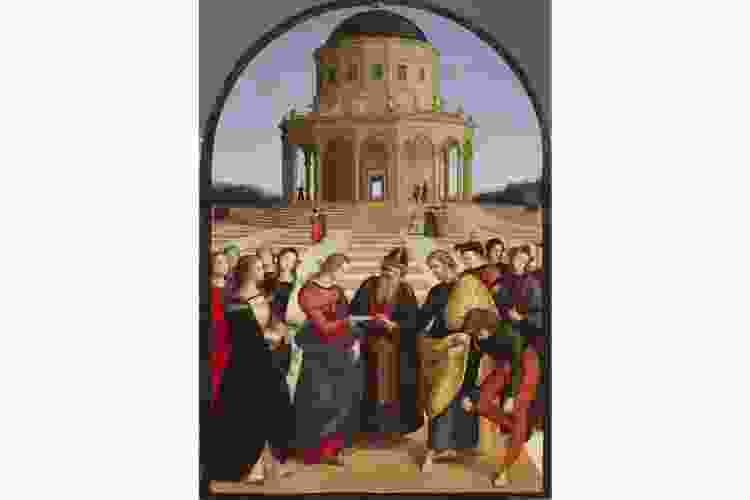
This is another one of the religious Raphael paintings that portrays the moment Mary weds Joseph. In the foreground, Mary, depicted in a red dress and a blue sash, gently holds out her hand as Joseph, adorned in a teal-ish garb and a gold sash, places a ring on her finger. Raphael’s ability to convey depth and grandeur is evident in the Marriage of the Virgin as he left significant space between the ceremony, happening in the foreground, and the circular, large temple in the background.
11. La Velata (1515)
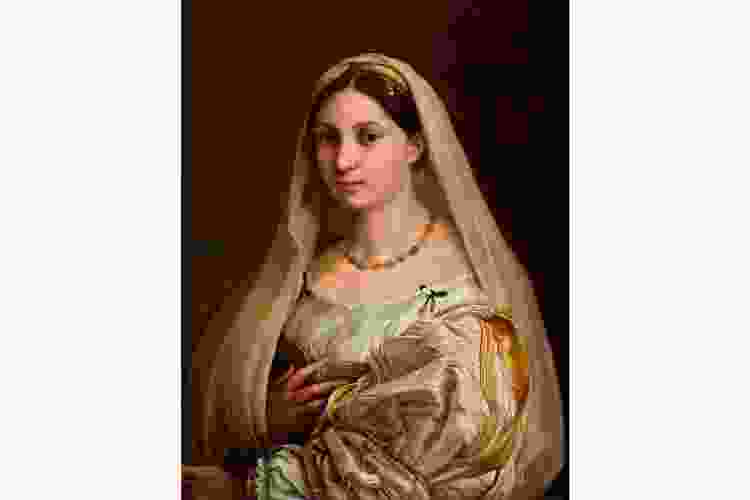
In this Raphael painting, a Noblewoman is draped in regal attire shimmering with gold. She wears a serene, soft expression as she hold her hand to her chest. The subject of this painting is thought to be model-turned-mistress, Margarita Luti who is also said to be the subject of La Fornarina.
12. Portrait of Baldassarre Castiglione (1514–1515)

Portrait of Baldassare Castiglione is considered one of the greatest portraits of the High Renaissance and its enduring influence speaks for itself. Raphael painted most of his creations on wood panels. However, for this Raphael painting, he chose to paint on canvas, making Portrait of Baldassarre Castiglione one of only two Raphael paintings on canvas. The portrait conveys the subject's nobility and his refined poise calls attention to the sophistication and grandeur of Renaissance humanism. Castiglione sports a soft gaze and a fur overcoat that Raphael so expertly captured through texture.
13. The Deposition (1507)
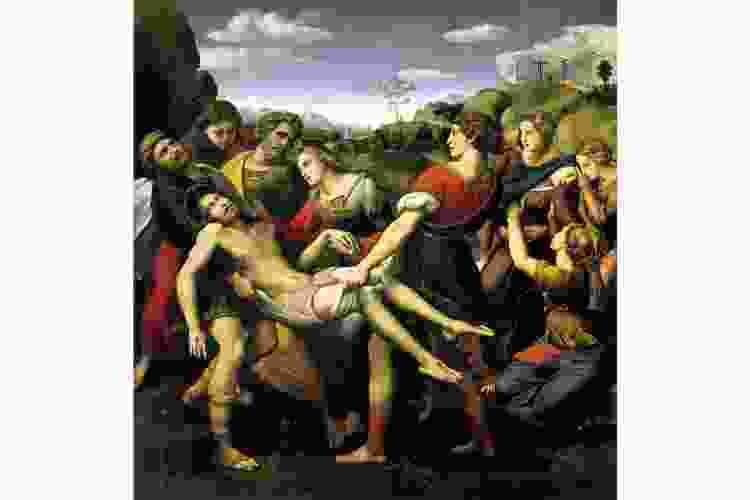
Many of the Raphael paintings capture biblical moments and they are almost all full of intense motion, whether it be happiness or despair. The Deposition portrays the moments after Christ's crucifixion. Mournfully, his followers carry him away from the execution place, their faces full of sorrow. However, there is a sense of hopefulness on the horizon due to Raphael‘s use of light in the background to contrast the darkness of color in the foreground.
14. Portrait of a Young Man (1513-1514)

Some say this is a self-portrait of Raphael, others say it captures a random pedestrian. Whatever the case, the original painting is missing and it has been since 1945 according to Daily Art Magazine. This is one of the illusive Raphael paintings as it vanished during World War II and was formerly exhibited at the Princes Czartorysky Museum in Krakow, Poland. Luckily, old photos of the painting still exist.
15. Mond Crucifixion (1502–1503)
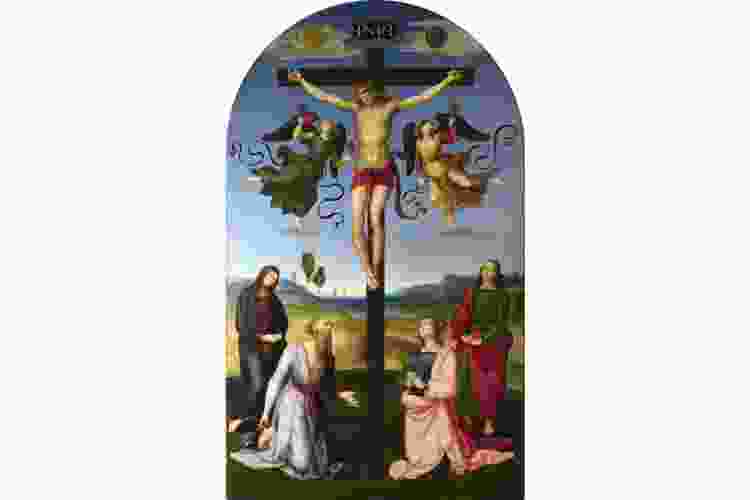
As one saying goes, “in death there is life,” which rings true for one of the most inspiring Raphael paintings. Mond Crucifixion centers around Christ on the cross. Surrounding him are angels and saints while his followers kneel below him, praying. There’s a harmonious arrangement to the piece and its vibrant colors suggest that it is part of a narrative that will soon change its tune to a more triumphant ending, which we know to be true.
16. Madonna Della Seggiola (1514)
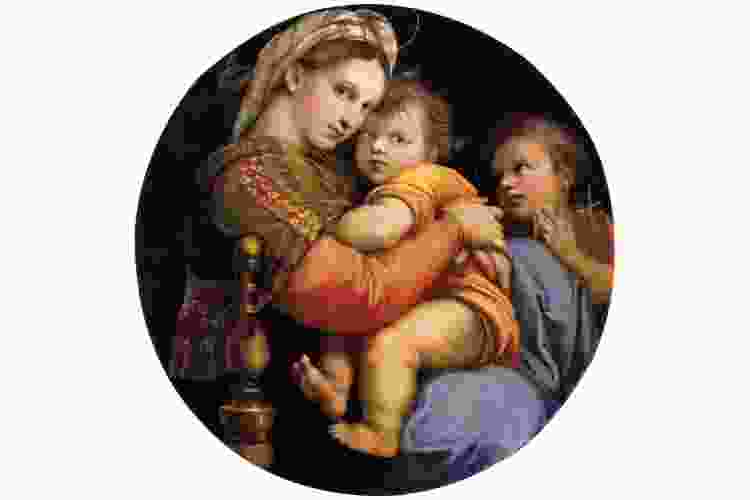
Mary’s maternal warmth for the Christ child is the heart and soul of this artwork, one of the more maternal Raphael paintings, as The Virgin Mother cradles her divine son. Raphael’s use of circular composition draws the viewer's attention towards them as central figures. We can’t help but feel her devotion as she holds the Christ child to her cheek, their gazes almost playful and loving.
17. Young Woman with Unicorn (1506)

Young Woman with Unicorn is full of myth, elegance and portraiture. A poised young woman holds a small unicorn in her lap. What makes this one of the most interesting Raphael paintings is that it wasn’t until conservation work began on the piece in 1934 that the unicorn was discovered. Before the 20th century, the woman was holding what looked like a feathered quill. However, when the restoration began, the paint was removed, revealing the mythical creature.
18. Portrait of Pope Julius II (1511–1512)

You’ll find many portraits of Popes throughout your investigation of Renaissance paintings, like Pope Leo X by Raphael. However, the Portrait of Pope Julius II is said to have been so life-like for its time that audiences were generally scared to look at the painting. This isn’t surprising. Pope Julius II seems almost lost in thought, an unusual portrayal of papal authority during the High Renaissance. The Pope is shown in one of the most touching Raphael paintings, where his power has a touch of humanity.
19. Vision of a Knight (1503–1504)
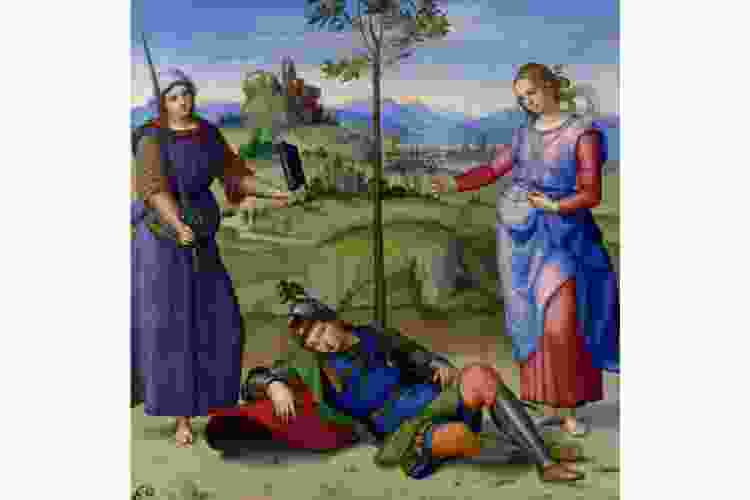
Vision of a Knight is perhaps one of the smallest Raphael paintings at 6.7 × 6.7 inches. In it, a young knight sleeps at the center of the foreground. To his left, an older woman holds out a bible and a sword. On his left, a radiant woman holds out a small bundle of flowers. Some believe the knight is at a crossroads, having to choose between virtue and pleasure. Others believe this to be a representation of the ideal knight as not only a soldier, but a scholar and a lover as well.
20. St. Michael Vanquishing Satan (1518)
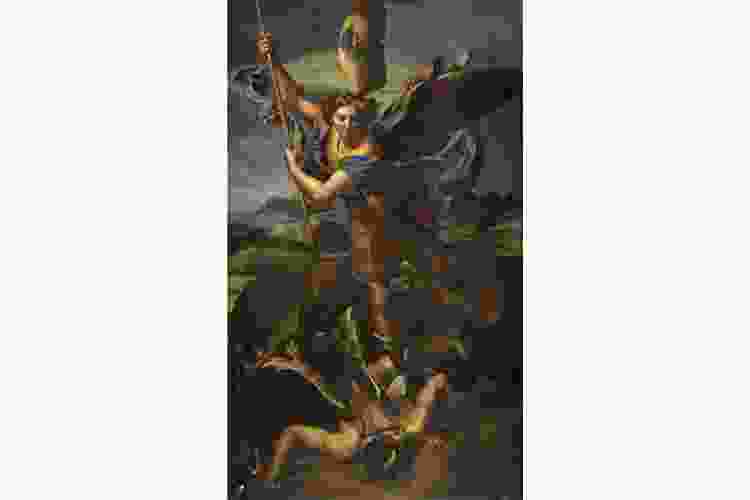
After being created 1667, this artwork, one of the more violent Raphael paintings, has lived comfortably in Paris’ Louvre and it holds symbolic meaning within Christianity. It symbolizes God triumphing over evil as the archangel Michael stands on the back of Satan, moments away from stabbing him with a long and pointed weapon. Swirling clouds in the background add chaos to the battle.
21. Portrait of Bindo Altoviti (1515)

With pale skin and long golden hair, Bindo Alrociti looks over his shoulder with pursed lips and rosy cheeks in one of the more delicate Raphael paintings. Bindo Altoviti was a rich banker who was keen on the arts. He wears a beret-like black cap, which was all the rage in the 16th century. He is adorned in a decadent blue garment with a white lace undergarment that is only visible at the neck — a sure sign of status and wealth.
Raphael paintings in America and all over the world have been at the center of artistic and religious discourse for centuries. He was an ambitious man as an artist, architect and scholar. While he is heavily regarded as the Supreme Renaissance painter, his ability to convey meaning, emotion and narrative has also aided in his legacy as a cultural icon.
For even more fun art ideas, check out other experiences happening on Classpop!

